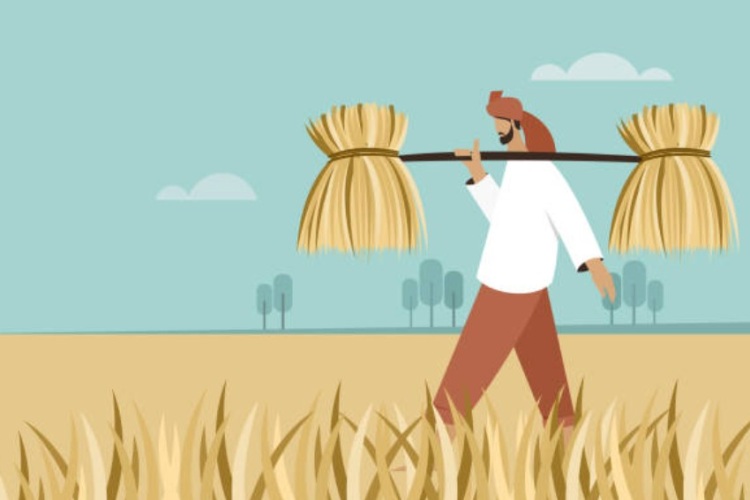
As the World Trade Organisation approaches its 30th anniversary in 2026, India’s agricultural heartland is under strain. The Uruguay Round of 1994, which first brought farming under global trade rules, now feels like a distant promise. India’s agriculture sector, on which 47% of the population depends for livelihood and which sustains exports worth $48.2 billion in FY 2024-25, faces a triple challenge: Donald Trump’s tariff salvos, erratic climate patterns, and a stalled WTO process.
In the 1990s, as India stepped gingerly into global trade after liberalisation, the Uruguay Round Agreement on Agriculture was hailed as a quantum leap. It left developing countries like India leeway to protect food security, even as the US and EU entrenched subsidies. China’s 2001 entry and the rise of BRICS altered the balance, with India and Brazil leading the G20 push against rich-country distortions. But globalisation’s backlash was evident as early as the 1999 Seattle protests, and momentum soon ebbed. The Nairobi deal of 2015 ended export subsidies but left food export restrictions unresolved. By 2019, the WTO’s dispute settlement system had been crippled when Washington blocked appellate appointments.
READ | Stray dogs, legal rights and the future of animal welfare
Trump’s return has sharpened the crisis. His Liberation Day tariffs, announced in April 2025, targeted countries with trade imbalances or political disagreements. India bore the brunt: a 25% tariff on August 7, doubled to 50% by month’s end, ostensibly for buying Russian oil during the Ukraine conflict. Commerce minister Piyush Goyal called it deeply regrettable, noting the threat to $3.47 billion worth of US agricultural exports to India, including spices and tea. Bilateral trade talks collapsed over US demands for dairy access and India’s resistance to exposing its farmers.
Climate and the food system crisis
Trade shocks are colliding with climate stress. The 2025 monsoon brought erratic rains and searing heat, disrupting wheat and rice. Every 1°C rise could cut wheat yields by 6–10%, putting nearly 60% of farmland at risk. Without adaptation, rice output could fall by 20% by 2050. Already, India has faced rice export bans and pulse shortages. Oilseed dependence has deepened, with 60% of demand met by imports. While more than half of farmers have adopted climate-resilient seeds, adaptation is patchy and lags the pace of change.
The domestic fallout is evident. Farmer protests have reignited, demanding legal minimum support prices across all crops and reviving “Quit WTO” slogans. Highway blockades and nostalgia for village self-reliance echo the movement that overturned farm laws in 2021. Surveys still show 65% farmer support for Prime Minister Modi, but discontent mirrors US farm politics where Trump commands strong rural backing. The government has relied on PM-KISAN, reaching 100 million households, but refuses to dilute its red lines on farm trade.
Globally, the mood has shifted from faith in efficiency to suspicion of markets. Friendshoring is the new mantra, with supply chains steered toward allies. India’s trade deficit hit $18.8 billion in June 2025, with imports at $53.9 billion against exports of $35.1 billion. Soybean purchases have moved from the US to Brazil. Free trade deals with the UK and EFTA promise agricultural flows worth £25.5 billion, but such arrangements often carry strategic strings and inefficiencies.
Resilience amid disruption
Yet resilience is visible. The global system withstood COVID-19 and the Ukraine war without collapse. India managed wheat exports when prices surged. Its strength in services remains unaffected. US clout in global trade is declining; its share of merchandise trade is barely 10%, down from 15–18% before the 1930s Smoot-Hawley tariffs. Trump’s protectionism may backfire as American consumers face higher food prices, inflationary pressures, and market pushback.
The WTO limps on. Interim mechanisms like the Multi-Party Appeal Arbitration keep part of the system alive. A fisheries pact shows cooperation is possible. Preparations for MC14 in June 2025 brought limited progress, with India hosting sessions on food insecurity. Meanwhile, digital farming adoption in India rose 40% in 2025, and the Union Budget backed regenerative practices and low-methane certification. Exports held up, with agricultural shipments worth ₹3,18,509 crore in April–December 2024, and rice alone expected to fetch $10 billion.
Agriculture sector: Policy choices for India
For policymakers, the imperatives are clear. Trade has improved welfare and food security but also produced losers. Schemes like PM-KISAN are better targeted than blanket protection, while investment in horticulture addresses malnutrition without closing borders. Global value chain analysis of inputs like fertilizers and edible oils is more useful than outdated trade models. Farmers, whose interests are concentrated, will continue to mobilise, while consumers remain diffuse and “rationally ignorant.” This dynamic feeds protests that mix distress with identity politics, mirroring discontent in Europe where farm anger has boosted populist parties.
Agriculture has long been the stumbling block of trade deals. Now the challenge is systemic, engulfing the wider trading order. India’s experience—balancing subsidies, resilience, and fairness—offers lessons for shaping global rules. As MC14 looms, priorities are evident: secure resolution on public stockholding, press for climate finance, and amplify farmer voices. With strategic clarity, India can help ensure that global trade strengthens, rather than undermines, the foundations of its agrarian economy.
Dr Jadhav Chakradhar is Assistant Professor of Economics at the Centre for Economic and Social Studies, Hyderabad. Dr Ritika Gupta is Associate Professor at the Rukmini Devi Institute of Advanced Studies, Delhi.
